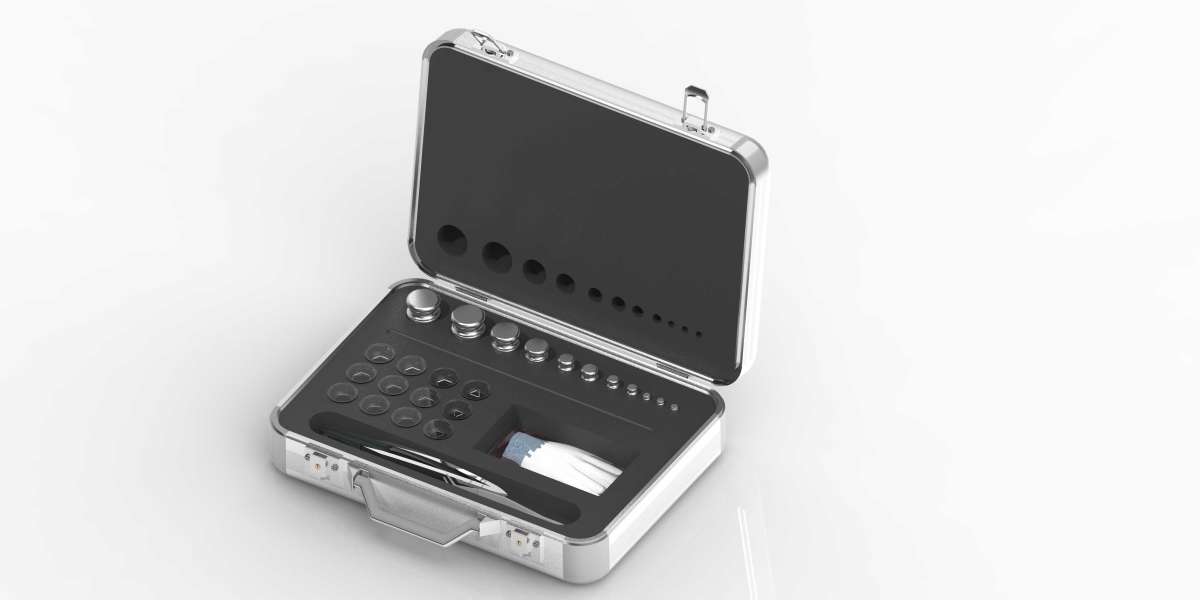Precision measurement is crucial in industries such as pharmaceuticals, manufacturing, and research. Accurate weighing systems ensure compliance with international standards and maintain consistency in measurements. E1 class weight plays a vital role in metrology and calibration, providing the highest level of precision for measuring instruments. From laboratory balances to industrial calibration systems, E class calibration weight is a critical component in ensuring traceability and accuracy.
1. What is an E1 Class Weight and Why is it Important?
An E1 class weight is the most precise weight category defined by the International Organization of Legal Metrology (OIML). These weights have the strictest tolerances and are used for calibrating high-precision balances.
Key Features of E1 Class Weight:
- Manufactured from high-grade stainless steel to resist corrosion.
- Designed with minimal uncertainty for high-accuracy calibration.
- Used in laboratories, research institutions, and metrology centers.
Due to their accuracy, E class calibration weight is essential for ensuring reliable and consistent measurement results in critical industries.
2. Understanding the Standard Weight Class System in Calibration
Calibration weights are classified into various categories based on precision levels, known as the standard weight class system.
Standard Weight Classes:
- E1 E2 Class Weights – Highest precision, used for high-accuracy calibrations
- F1 F2 Class Weights – Used for industrial and commercial weighing applications
- M1, M2 M3 Class Weights – Suitable for general weighing purposes
Among these, E1 class weight is the most accurate and is often used as a reference standard for calibrating lower-class weights.
3. How E Class Calibration Weight Ensures Accurate Measurements
The reliability of measurement systems depends on the accuracy of calibration weights. E class calibration weight ensures precision by maintaining strict tolerance limits, allowing accurate weight verification.
Factors Affecting Calibration Accuracy:
- Environmental Conditions: Temperature and humidity fluctuations can impact weight accuracy.
- Handling and Storage: Proper storage in an E class weight box prevents contamination and ensures long-term accuracy.
- Traceability: Calibration must be traceable to national and international standards to maintain reliability.
By using certified E1 class weight, industries can ensure compliance with global calibration standards.
4. Choosing the Right E Class Weight Box for Calibration Needs
A high-quality E class weight box is essential for protecting and maintaining the accuracy of calibration weights.
What to Look for in an E Class Weight Box?
- Material Quality: Stainless steel or aluminum casing for durability.
- Protective Padding: Ensures weights remain uncontaminated and free from scratches.
- Calibration Certification: A certified E class weight box ensures compliance with industry regulations.
By selecting the right E class weight box, organizations can maintain accuracy in metrology applications.
5. Best Practices for Handling and Maintaining E Class Weight
To maintain the precision of E1 class weight, proper handling and maintenance are essential.
Tips for Handling E Class Calibration Weight:
- Use Gloves: Prevents oil and dirt from contaminating the weights.
- Keep in a Controlled Environment: Avoids exposure to moisture and temperature fluctuations.
- Regular Calibration Checks: Ensures long-term accuracy and compliance.
By following these best practices, businesses can extend the lifespan of their E class calibration weight and maintain accurate measurement standards.
6. The Future of Metrology: Advancements in Standard Weight Class
With technological advancements, the field of metrology is continuously evolving. Innovations in standard weight class manufacturing, such as AI-driven calibration and automated weight verification, are improving accuracy and efficiency.
Future Trends in E Class Weight Calibration:
- Automated Calibration Systems: Reducing human error in measurement verification.
- Enhanced Material Engineering: Developing more stable and precise calibration weights.
- Digital Traceability: Ensuring easier compliance with international metrology standards.
As industries demand higher accuracy, E1 class weight will continue to play a crucial role in maintaining precise and reliable calibration processes.
E1 class weight is the foundation of accurate calibration in metrology. From ensuring compliance with international standards to maintaining precision in laboratories and industries, these weights are indispensable. Using a certified E class weight box, following best practices for calibration, and staying updated with advancements in standard weight class technology can help organizations achieve unmatched accuracy in measurement.
By prioritizing E class calibration weight, businesses can enhance quality control, ensure regulatory compliance, and improve operational efficiency.
Would you like assistance in selecting the right E1 class weight for your needs? Contact us today to explore high-precision calibration solutions!







